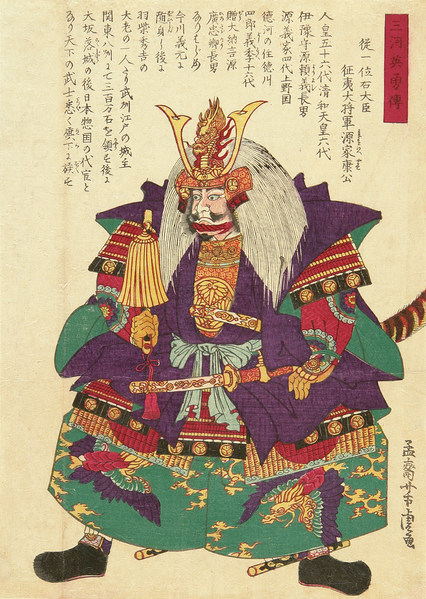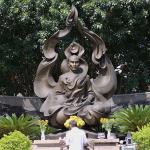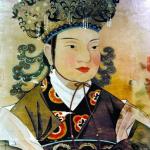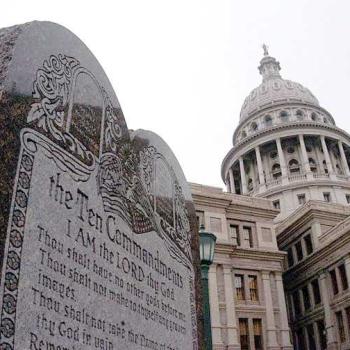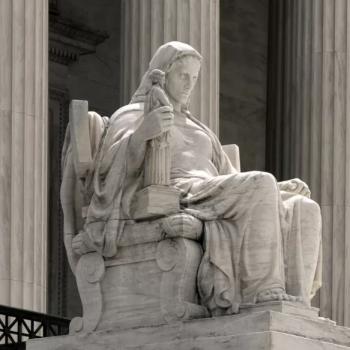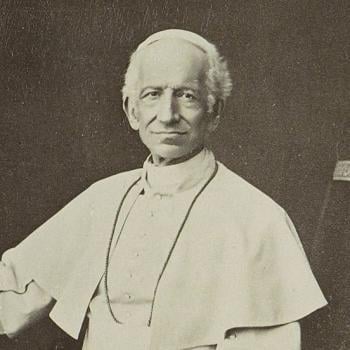How close is the new Shogun miniseries (not to be confused with the old one from 1980) to the real history of 17th-century Japan? This historical drama, streaming on Hulu, is set in a pivotal moment of Japanese history that I’ve written about recently, a tragic chapter in the history of Christianity in Asia.
Episode one begins by announcing that the year is 1600. What was significant about 1600? This was fifty-one years after the first Christian missionary, the Jesuit priest Francis Xavier, arrived in Japan. At first the Jesuits had great success converting Japanese to Christianity. But then things took a turn. In 1597 — just three years before the fictional Shogun narrative begins — 26 Catholic priests and converts were crucified in Nagasaki. And in 1614, Christianity was entirely banned in Japan, and it remained banned until 1868.
In the miniseries — of which I’ve seen only the first two episodes — many of the Japanese characters are openly Christian, and there is no hint (so far) of any backlash or oppression against them. So that much strikes me as a bit off. However, the warlord who ordered the crucifixion of the martyrs of Nagasaki, Toyotomi Hideyoshi, died in 1598. It’s possible that in 1600 the Christians of Japan were in a brief period of grace, as far as the warlords in charge were concerned.
The story also reflects history that was happening in Europe. The Reformation was still going strong in 1600, and this impacts the interactions of the European characters in the drama. In 1579 an armed resistance against Philip II of Spain and his Catholic rule of the Netherlands brought about the foundation of the Dutch Republic (see “William I of Orange and Religious Freedom“). In 1600 Queen Elizabeth I (1533-1603) was still on the throne of England. The Queen had been an ally of the Dutch rebels. This had inspired Philip II in 1588 to send the Spanish Armada to overthrow her and reinstate Catholicism as the state religion of England. You may recall that effort failed, in what is remembered as Elizabeth’s finest hour. But this was just one part of an Anglo-Spanish War that raged from 1585 to 1604. Hold that thought.
James Clavell’s Shogun
The ten-part series is a new adaptation of the James Clavell novel Shogun, first published in 1975. James Clavell based some of his fictional characters on actual historical figures. The English navigator John Blackthorne (played in the new series by Cosmo Jarvis) is based on William Adams, the first Englishman to reach Japan, in 1600. Adams was the navigator of a Dutch ship called the Liefde, owned by a consortium of Rotterdam merchants that would later become the Dutch East India Company. Significantly, the ship landed in Kyushu, the southern island of Japan that had the largest population of Christians at the time. Adams remained in Japan the rest of his life, eventually becoming a samurai in service to Tokugawa Ieyasu, who became Shogun — military dictator — of Japan in 1604. In the series, the character of Yoshii Toranaga, played by Hiroyuki Sanada, is based on Tokugawa Ieyasu. So — spoiler alert! — we can assume that Toranaga is going to become the Shogen at the end. But maybe we’ll be surprised.

The new series differs from the first Shogun miniseries, starring Richard Chamberlain and Toshirô Mifune, which was a television phenomenon in 1980. The major difference, so far, is that the old series was told entirely from John Blackthorne’s perspective. In the new one, we hear much more from the perspectives of the Japanese characters. Much of the dialogue is in Japanese, but (unlike in the first series) it’s subtitled. This promises to give us a richer and more layered story.
I read the novel shortly after the 1980 miniseries was broadcast. As I remember, the novel is very long and stops abuptly without a proper resolution. I imagined an editor yanking the manuscript out of Clavell’s hands and saying enough, already. Over the years the novel has been both praised and panned. It does tell a good story, but it is riddled with errors in Japanese geography. It exoticizes the Japanese, especially the women. One recent critic called the nnovel “laden with lazy stereotypes and Orientalism.” And I understand that in 1600 the Japanese really didn’t commit ritual suicide as lightly and frequently as the novel suggests. (Although it happened; see “The Warlord and the Tea Master.”) In World War II Clavell was a prisoner of war of the Japanese, although he wasn’t imprisoned in Japan. The casual cruelty of Japanese characters possibly reflects Clavell’s POW experience. I am hoping the miniseries will prove to be more balanced.
More About the History
The first episode begins when a tattered, drifting sailing ship with a starving crew lands near a fishing village somewhere in Japan We learn that this is a Dutch merchant ship, the Erasmus. Samurai of the local daimyo, something like a feudal lord, take the cargo and crew ashore. John Blackthorne, the navigator, is hauled before the daimyo. He realizes he is in trouble when a Catholic priest arrives to translate and accuses Blackthorne of being a pirate. The only Europeans in Japan were Portuguese and Spanish Catholics, missionaries and merchants, and until then the Japanese probably knew nothing of the wars roiling Europe. They would begin to learn from Blackthorne.
Meanwhile, we meet the powerful warlord Yoshii Toranaga, the character based on the historical Tokugawa Ieyasu. We learn that an unnamed regent, or Taiko, had died and left a small child, a son, as his heir. Before he died, the Taiko formed a five-person Council of Regents to govern Japan until the boy came of age. Toranaga was one of the five. The other four regents have united against him and made false accusations about keeping the heir’s mother hostage. This in effect caused Toranaga to become a hostage himself, in Osaka Castle, on the largest Japanese island of Honshu. The series hints that a great civil war is coming.
This is partly based on real history. The historical regent was the afore-mentioned Toyotomi Hideyoshi, who died when his heir was five years old. (Yes, there was an Emperor, but the Emperor had been just a figurehead since the 12th century.) Hideyoshi appointed a Council of Elders, five powerful warlords, although their role was limited to foreign relations and some domestic concerns, notably religious affairs and maintaining the loyalty of the many daimyo to the heir. They were also to keep an eye on another council, one of five commissioners or administrators who were charged with managing the government.
The Tokugawa Shogunate Begins
Staying with real history: One of the commissioners, Ishida Mitsunari, made an enemy of Tokugawa Ieyasu, the head of the Council of Elders. For some reason, Ishida actively worked at turning the daimyo against Tokugawa. This came to a head in October 1600 in a massive battle at Sekigahara, northwest of Kyoto. Tokugawa prevailed, and there was little questioning of his power after that. Shortly after Sekigahara, Tokugawa Ieyasu began the process of claiming the title of Shogun, the supreme leader of Japan. The Tokugawa shogunate ruled Japan from 1603 to 1868.
Oh, and to be sure there were no challenges to his power from the Toyotomi family, beginning in 1614 Tokugawa Ieyasu began a military offensive against Osaka castle, which for a time settled into a seige. The castle was taken in June 1615. The heir, 21-year-old Toyotomi Hideyori, commited ritual suicide. But this takes place long after the narrative in the book.
Tokugawa Ieyasu would eventually ban Christianity, in 1614, because he saw foreign missionaries as a threat to his power. By the 17th century, portions of Asia were already colonized by European powers. The pattern was that first came merchants, then came missionaries, then came troops. Merchants, missionaries, and their European rulers saw themselves in a kind of partnership. This explains why (in the series) a Spanish Catholic priest was alarmed that Dutch (and English) merchants had arrived in Japan. Would Protestants be far behind?
Rivalries
In real Japan, what kept coming were not Protestant missionaries but more orders of Catholic clergy. The Jesuits were first, and in the 16th century they enjoyed great success. This was in part because a particularly powerful, and ruthless, warlord named Oda Nobunaga (1534-1582) encouraged them. Nobunaga was less interested in Jesus than he was in using the Jesuits to reduce the power of some of the large Buddhist sects.
The Jesuits had a policy of blending in to local culture as much as possible so as to not cause offense or friction. By the late 16th century they also had a good understanding of how power worked in Japan, including when to keep their heads down. Then Franciscans began arriving in 1593. The Franciscans did not try to blend in or keep their heads down, and apparently they wouldn’t listen to the Jesuits. Public missionary work, including preaching, had been forbidden by the regent of Japan, Toyotomi Hideoshi. The Franciscans preached in public anyway. This possibly was a contributing factor to Toyotomi Hideyoshi’s decision to crucify 26 Catholics — 23 Franciscans and 3 Jesuits — in 1597. And it certainly didn’t help that, in our pivotal year 1600, Pope Clement VIII authorized more orders to do missionary work in Japan. Dominicans and Augustinians began arriving in Japan two years later.
Skipping quite a bit — eventually a third Tokugawa shogun, Iemitsu (1604–1651), evicted all Portuguese traders from Japan. And then most other foreigners were evicted from Japan, as well as mixed-race children of Japanese and foreigners. After 1639, Japan was closed to foreigners, and Japanese were not allowed to leave. The only contact allowed with the outside world was through trade, and the only European trade allowed was with the Dutch East India Company. And the Dutch were allowed to land only on an island in Nagasaki Bay. This isolation was maintained until 1853, when U.S. Commodore Matthew Perry arrived in Tokyo Bay with four well-armed warships.
The Rest of the Series
Shogun the miniseries is fiction. Many scenes depict events that never happened. Most of the side characters are invented. But if it’s going to maintain any connection to Japan in 1600, I’d expect to see foreshadowing, at least, of the coming repression of Christianity. We might also see some rivalry among the various Catholic orders in Japan.
The main female character, Toda Mariko (played by Anna Sawai) is modeled on the life of a Japanese noblewoman named Akechi Tama, better known as Hosokawa Gracia. Tama was born in 1563, which would make her a tad older than the Mariko character, and the real Tama was not known to have had anything to do with William Adams. Tama’s conversion to Christianity in the 1580s caused a rift with her husband, and apparently the quarrels between the two became the stuff of legend. I have read some criticism of Clavell’s character of Toda Mariko, because she seems to have more independence than a Japanese woman of her time would have had. This may be so, but it’s also my understanding that women of the samurai class had a bit more room to maneuver, so to speak.
Here’s something that probably won’t be in the series: The one real-world legacy of the Catholic missionaries in Japan was a Portuguese dish of breaded and fried vegetables called Peixinhos da horta, or “little fishes from the garden,” The Japanese ran with the idea, and the result was tempura.
